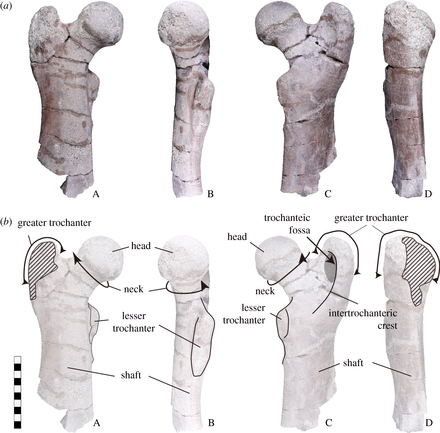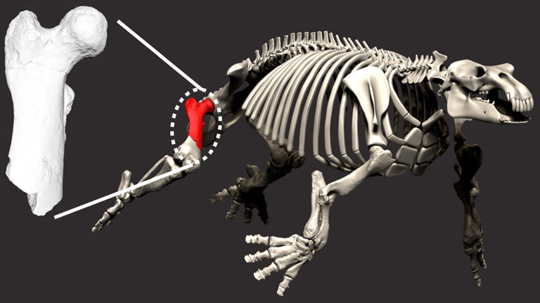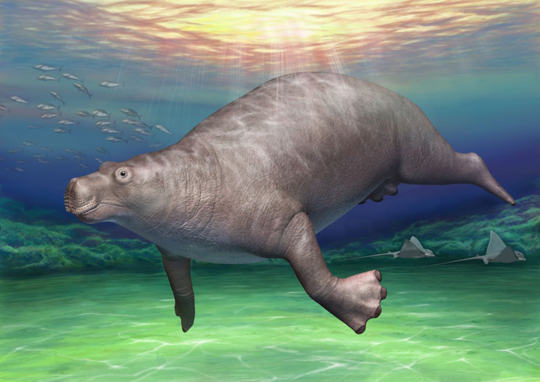Desmostylian Discourse and a Rare Fossil Bone
“Dinosaur” Bone Identified as Desmostylian
A fossil bone, a partial femur, found in the 1950s and originally regarded as “dinosaur” bone has been reassessed and confirmed as coming from a bizarre marine mammal, a member of the Desmostylia Order, a group of mysterious animals that looked like a cross between a sea-going hippopotamus and a sealion with hooves. Writing in the open access journal of the Royal Society (Royal Society Open Science), the research team were able to track down the fossil site using the original hand-written note kept with the fossil in combination with interviews of relatives of construction workers who were involved in the original fossil find.
Views of the Fossil Femur – The “Dinosaur” Bone

Picture credit: Kumiko Matsui et al./Royal Society
The picture above shows the fossil femur (top) with an accompanying line drawing (bottom). Cranial view (A), interior view (B), caudal view (C) with an exterior view (D). Note the scale bar is ten centimetres.
Scientists Turn into Detectives
Yuri Kimura, the Curator of Vertebrate Palaeontology at the National Museum of Nature and Science (Tokyo) and one of the co-authors of the scientific paper, found an old wooden box when exploring the archives of the University of Tsukuba last year. The box contained the proximal end of a right femur. The scientist then set about identifying the location of the fossil find. Yuri and the other collaborators on this project, a combination of anatomical assessment, taphonomy and detective work, learned that the fossil was discovered during construction of a debris flow barrier and that it was recognised as a “dinosaur” bone among the locals and displayed in a village hall until the town experienced a fire disaster in 1954.
During the research, one of the interviewees confirmed that the bone had been described as coming from a member of the Desmostylia, but if it had been examined by a scientist/palaeontologist, it had not been reported or the find officially documented.
A Skeletal Drawing of Paleoparadoxia (Desmostylia) Showing the Anatomical Position of the Bone

Picture credit: Kumiko Matsui et al./Royal Society
Paleoparadoxia (Desmostylia)
Comparisons undertaken with other fossil specimens, led the research team to conclude that the right femur was from the Paleoparadoxia genus, a member of the Desmostylia, an extinct Order believed to be distantly related to Sea Cows.
This study provides an excellent example of historical and scientific information being extracted from long-forgotten and uncatalogued specimens so long as the original information is retained with the specimens.
A Life Reconstruction of Paleoparadoxia

Picture credit: Kumiko Matsui et al./Royal Society
Visit the Everything Dinosaur website: Everything Dinosaur.

